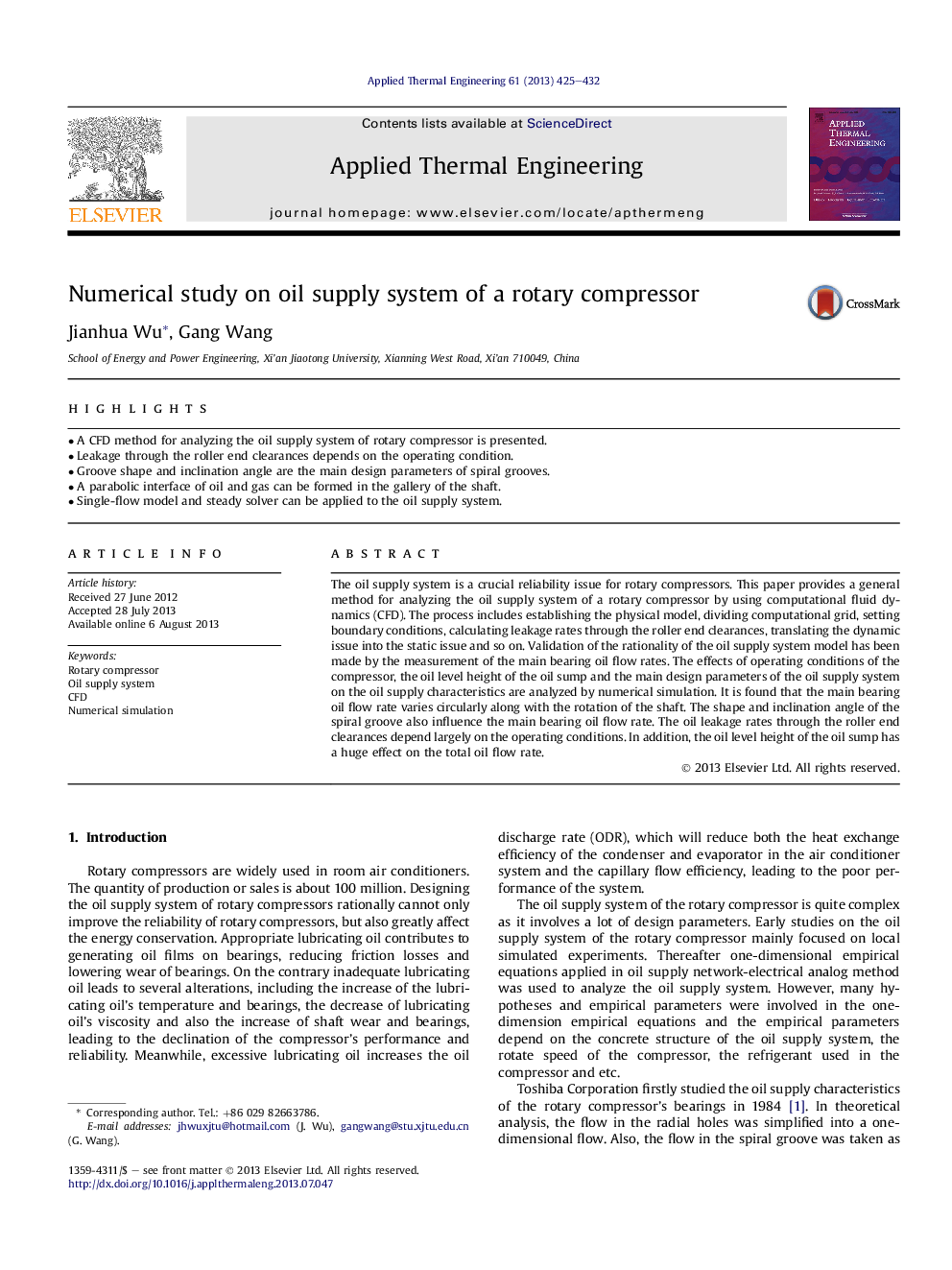| کد مقاله | کد نشریه | سال انتشار | مقاله انگلیسی | نسخه تمام متن |
|---|---|---|---|---|
| 646600 | 884567 | 2013 | 8 صفحه PDF | دانلود رایگان |

• A CFD method for analyzing the oil supply system of rotary compressor is presented.
• Leakage through the roller end clearances depends on the operating condition.
• Groove shape and inclination angle are the main design parameters of spiral grooves.
• A parabolic interface of oil and gas can be formed in the gallery of the shaft.
• Single-flow model and steady solver can be applied to the oil supply system.
The oil supply system is a crucial reliability issue for rotary compressors. This paper provides a general method for analyzing the oil supply system of a rotary compressor by using computational fluid dynamics (CFD). The process includes establishing the physical model, dividing computational grid, setting boundary conditions, calculating leakage rates through the roller end clearances, translating the dynamic issue into the static issue and so on. Validation of the rationality of the oil supply system model has been made by the measurement of the main bearing oil flow rates. The effects of operating conditions of the compressor, the oil level height of the oil sump and the main design parameters of the oil supply system on the oil supply characteristics are analyzed by numerical simulation. It is found that the main bearing oil flow rate varies circularly along with the rotation of the shaft. The shape and inclination angle of the spiral groove also influence the main bearing oil flow rate. The oil leakage rates through the roller end clearances depend largely on the operating conditions. In addition, the oil level height of the oil sump has a huge effect on the total oil flow rate.
Journal: Applied Thermal Engineering - Volume 61, Issue 2, 3 November 2013, Pages 425–432